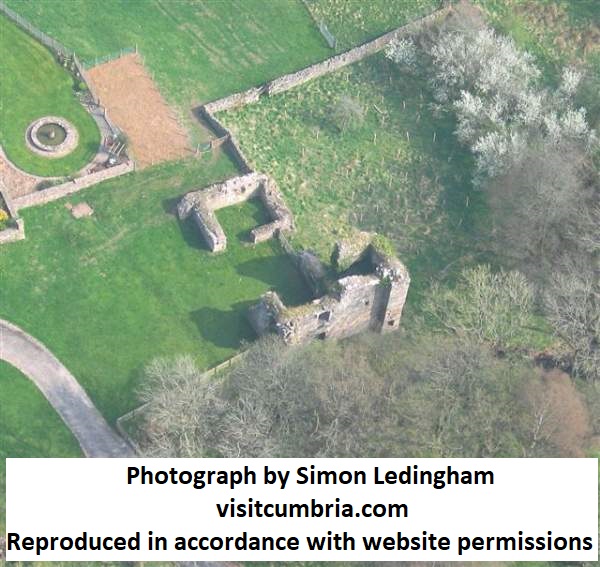Bewley Castle

Bewley Castle Details
Bewley Castle is the ruined remains of a fortified manor of the Bishops of Carlisle sat next to a working farmyard. Much of what survives is most likely late 14th century.
- Closest To: Appleby-in-Westmorland, Kings Meaburne
- Access: No Access
- Grid Reference: NY648212
Bewley Castle is the ruined remains of a courtyard residence of the Bishops of Carlisle. The ruins sit adjacent to a working farm, and cannot be seen from the public roads. They consist of a quadrangular walled area (probably non-contemporary), on the west side of which stands the building itself, which was roughly C-shaped, with wings extending into the enclosed area. The building remains stand up to 10 metres tall in places.
The building consisted of a long residential range running north-south, at the southern end of which was a cross-wing which incorporated a tower of at least three storeys. The two ground floor rooms of this wing were vaulted. At the northern end was another cross wing, again vaulted. and it appears likely this contained the chapel on the first floor from the window tracery. The central part of the building is mostly missing, the masonry robbed to provide building materials for the adjacent farm buildings. There is no evidence that it was ever fortified seriously, and the name “castle” appears to be a 17th century romantic fabrication.
The lands here were granted to the bishopric of Carlisle in the mid 12th century, when the bishopric was vacant, and was at that time called Fithnenin. The name was retained into the late 13th century, but after 1292 and the death of Bishop Ireton, it started to be called “Bellus Locus” in documents which corrupted into Bewley. It may have been referred to by that name previously – in the 1220s the bishop was Hugh of Beaulieu in Hampshire. The building dates to the time of bishop John Ros (1325-32), a son of the lord of Helmsley in Yorkshire, perhaps having been burned out by the Scots, but there was also a major rebuilding program under bishop William Strickland (1400-19). Eventually the manor was leased out, and by the 17th century was held by the Musgraves from the bishops, and the ecclesiastical commissioners finally sold the 219 acre estate in 1857. It is not clear when the place finally fell into ruins.
Become a supporter of my work to access a more detailed history